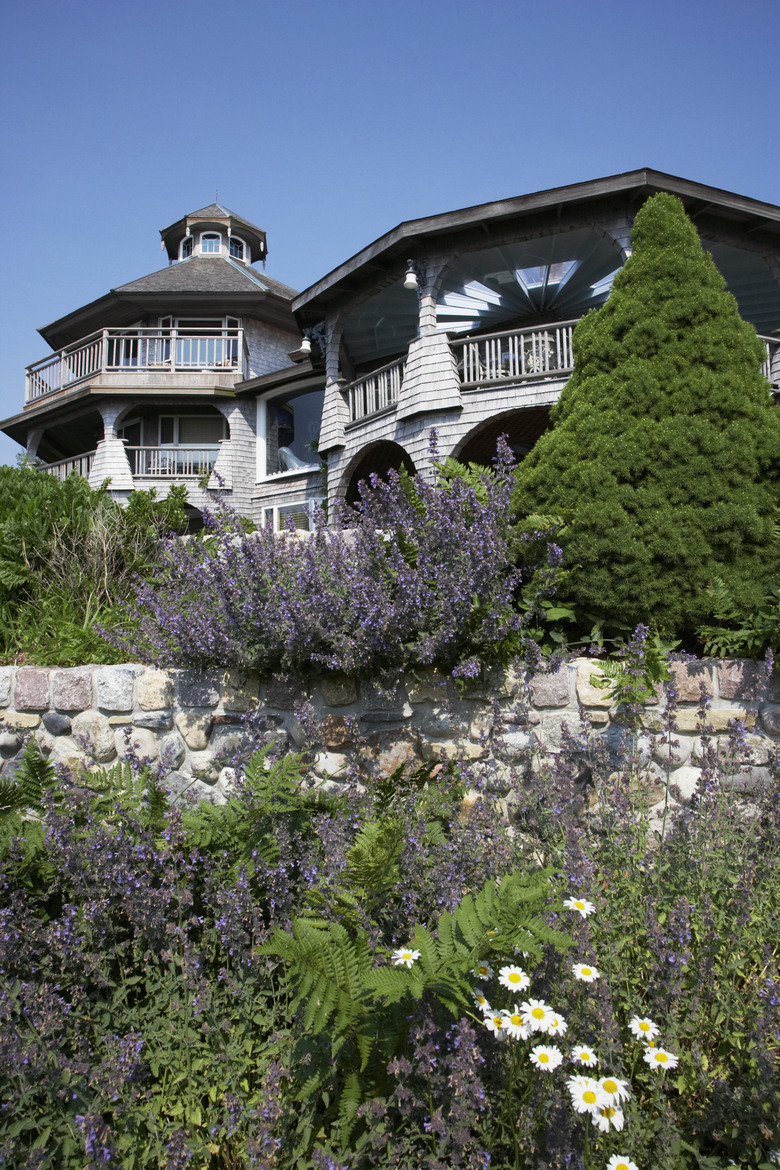Planting Zone For Massachusetts
Massachusetts spans about 8,257 square miles, and within those many miles it hosts a diverse range of regional and seasonal climes, from comfy summer temperatures to winter temps that often fall below freezing. [Ref 1] However, all areas of the Bay State fall within U.S. Department of Agriculture plant hardiness zones 5 through 7. These zones, updated in 2012, help you decide what to plant at home based on the average minimum winter temperature of the area. [Ref 2]
Zone 5
Step 1
The majority of western and central Massachusetts falls within USDA plant hardiness zone 5b, which is defined by average minimum winter temperatures of -15 to -10 degrees Fahrenheit. This planting zone encompasses Berkshire County, Greenfield, the majority of Pittsfield, Franklin, central Worcester County, most of northern Gardner and the western portions of Hampden and Hampshire counties. A few very small areas of the state fall into the chillier zone 5a, which has average minimum winter temps of -20 to -15 degrees Fahrenheit. These regions include a strip of central and northern Berkshire county and a small section of northern Worcester County. Suggested garden plants for zone 5 include daisy-like asters, drooping wisteria and common garden veggies such as lettuce and onions.
- Massachusetts spans about 8,257 square miles, and within those many miles it hosts a diverse range of regional and seasonal climes, from comfy summer temperatures to winter temps that often fall below freezing.
- [ Ref 2] The majority of western and central Massachusetts falls within USDA plant hardiness zone 5b, which is defined by average minimum winter temperatures of -15 to -10 degrees Fahrenheit.
Zone 6
Step 1
Roughly half of central Massachusetts, including the lower half of Worcester County, central Middlesex County and western Essex County, occupies USDA plant hardiness zone 6a. This zone features average minimum winter temperatures of -10 to -5 degrees Fahrenheit. All of the city of Springfield, as well as central and western Hampden County, inhabits this zone as well, as does the western half of Norfolk County. Eastern Massachusetts, from the city of Gloucester and the county of Bristol to the eastern border of Plymouth County, falls into hardiness zone 6b, where average minimum winter temperatures range from -5 to 0 degrees. Ornamental hydrangeas, lilies and irises thrive in zone 6, as do blackberries and blueberries.
Zone 7
Step 1
The temperate island counties of Dukes and Nantucket reside in USDA plant hardiness zone 7a. The average minimum winter temps in this more moderate zone fall between 0 and 5 degrees Fahrenheit. The city of Barnstable and the majority of Barnstable County are also in zone 7a, as is the southern coastal region of Bristol County. Zone 7 accommodates herbs such as chives and rosemary, as well as sweet fruits like peaches and pears.
- Roughly half of central Massachusetts, including the lower half of Worcester County, central Middlesex County and western Essex County, occupies USDA plant hardiness zone 6a.
- Eastern Massachusetts, from the city of Gloucester and the county of Bristol to the eastern border of Plymouth County, falls into hardiness zone 6b, where average minimum winter temperatures range from -5 to 0 degrees.
More Info
Step 1
The Bay State has a growing season about 120 to 140 days in the west and about 160 to 200 days on its eastern coast. This region has a fairly even distribution of precipitation, which averages about 40 to 50 inches per year. If you need more info about your particular region before planting, contact your local Cooperative Extension Service System office — these plant pros can provide data on everything from invasive plants to soil amendments.
References
- Community Collaborative Rain, Hail and Snow Network: Massachusetts' Climate
- United States Department of Agriculture: News Release: USDA Unveils New Plant Hardiness Zone Map
- United Stated Department of Agriculture Agricultural Research Service: USDA Plant Hardiness Zone Map
- The Old Farmer's Almanac: Plants by Hardiness Zone: 5
- The Old Farmer's Almanac: Plants by Hardiness Zone: 6
- The Old Farmer's Almanac: Plants by Hardiness Zone: 7
